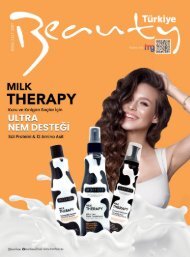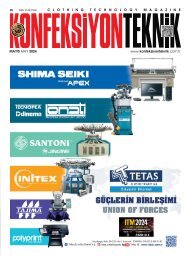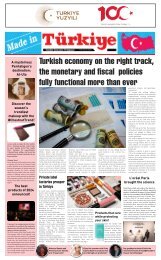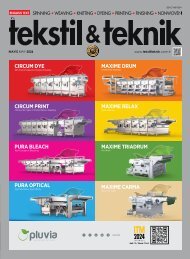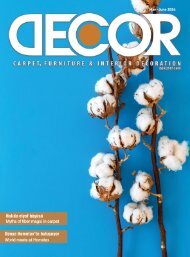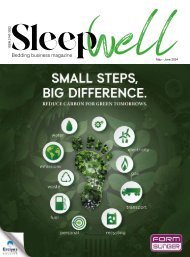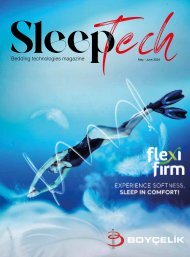SleepTech Magazine / May - June 2017
Create successful ePaper yourself
Turn your PDF publications into a flip-book with our unique Google optimized e-Paper software.
90<br />
chemicals. Latex foam is produced<br />
using either the Talalay or the<br />
Dunlop process. Each provides a<br />
different feel. Dunlop is generally<br />
a firmer foam but Talalay is softer.<br />
While the Dunlop process produces<br />
a denser foam, the Talalay<br />
process produces a lighter one<br />
that has more air in it. If you were<br />
to weigh each as latex cores, the<br />
Dunlop foam would be heavier<br />
because it has more latex in it.<br />
Talalay is more expensive as its<br />
production is more resource intensive.<br />
Natural latex foam has a<br />
higher latex content than synthetic<br />
latex, however, “100% natural<br />
latex foam” is misleading.<br />
Memory foam<br />
Memory foam mattresses use conforming viscoelastic<br />
foam over firmer polyurethane base<br />
foam. Some innerspring mattresses have memory<br />
foam in their upholstery layer. Different feels<br />
and comfort levels are achieved by varying the<br />
thickness, weight and formulation of the viscoelastic<br />
foams and the base foams. Latex and<br />
memory foam mattresses each provide a unique<br />
feel. This type of mattress is good at relieving<br />
pressure on painful joints. Many memory foam<br />
mattresses are more expensive than standard<br />
spring mattresses.



